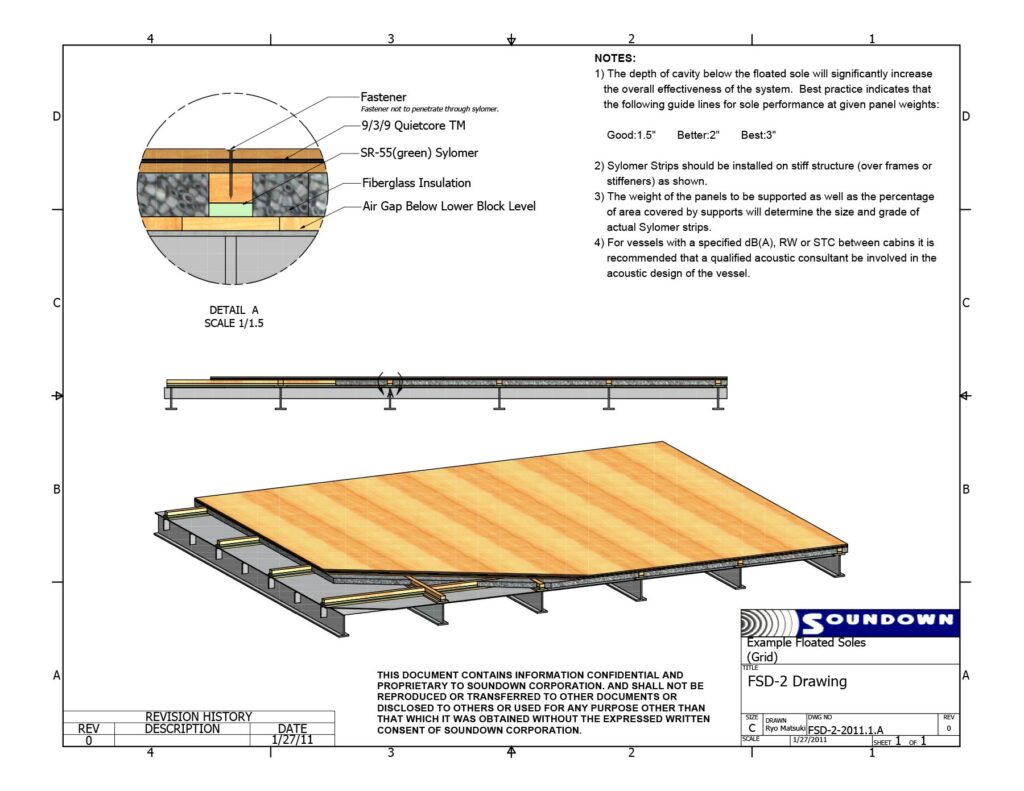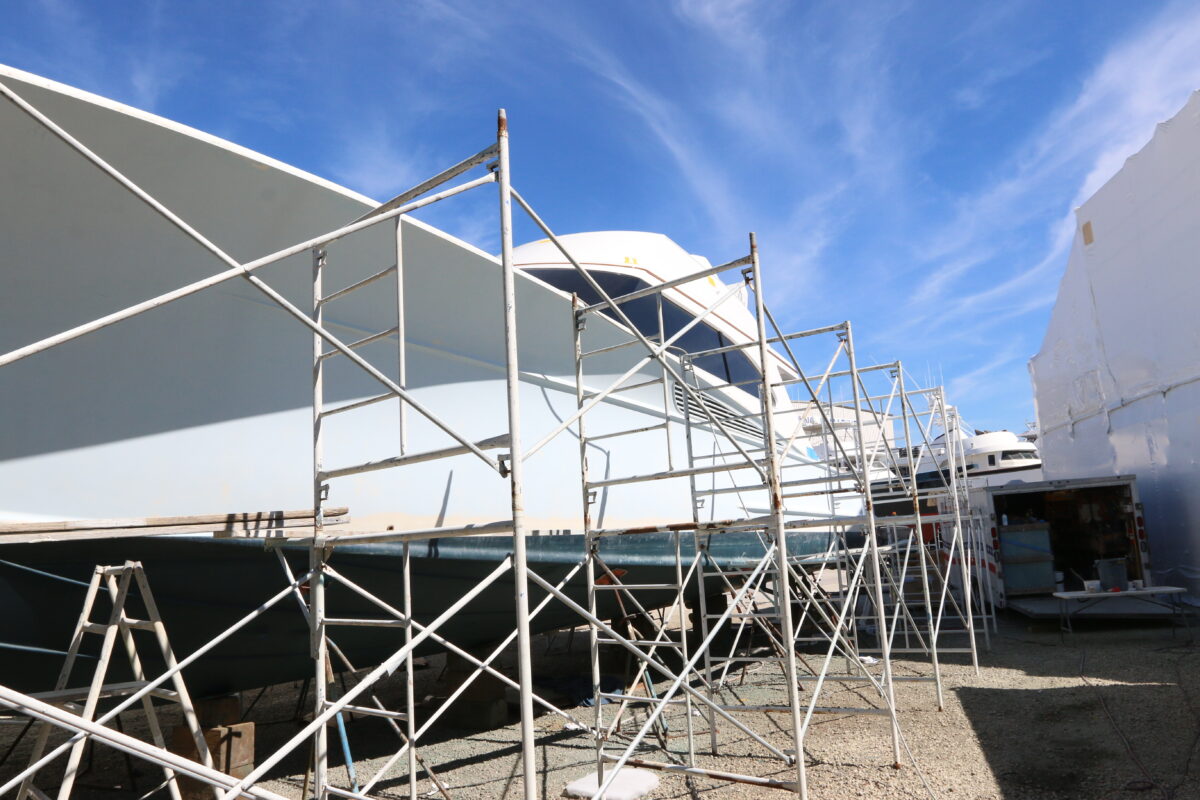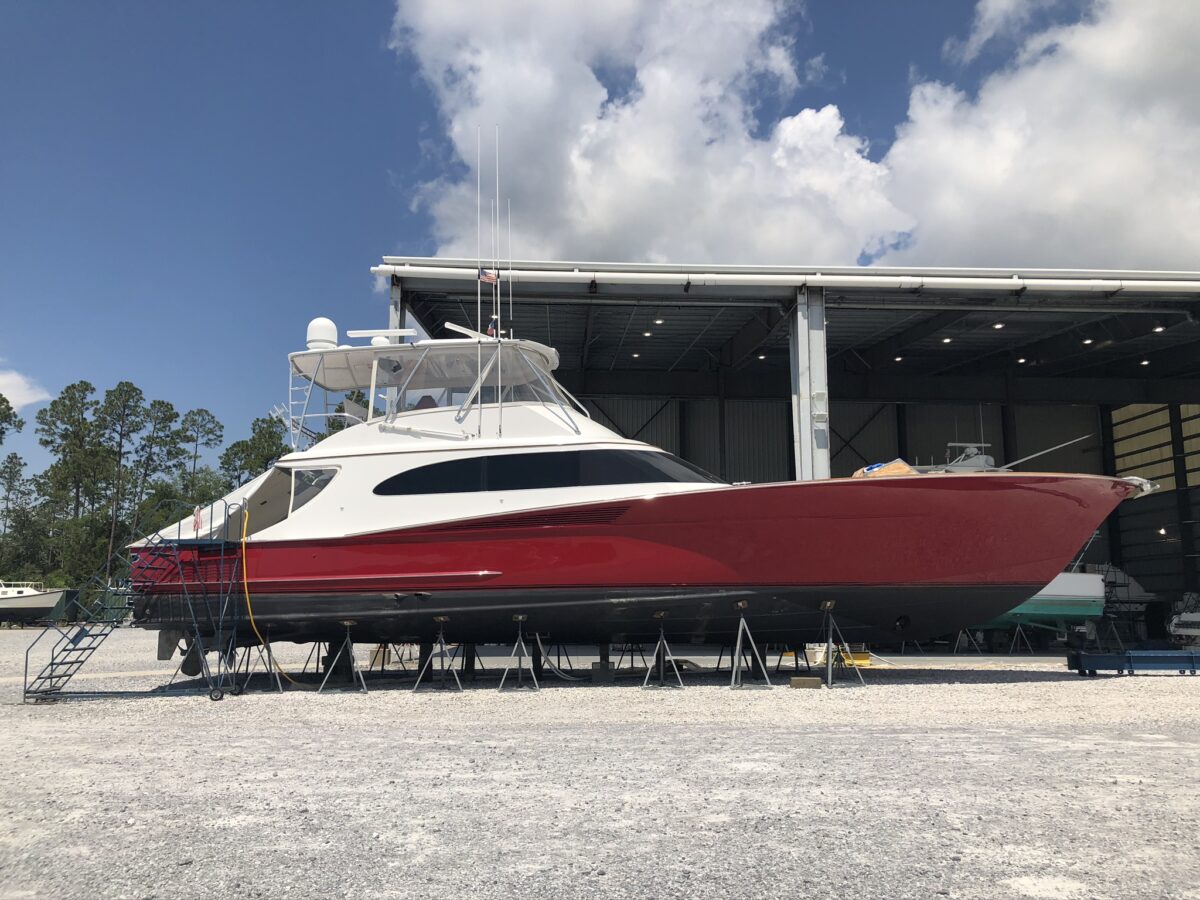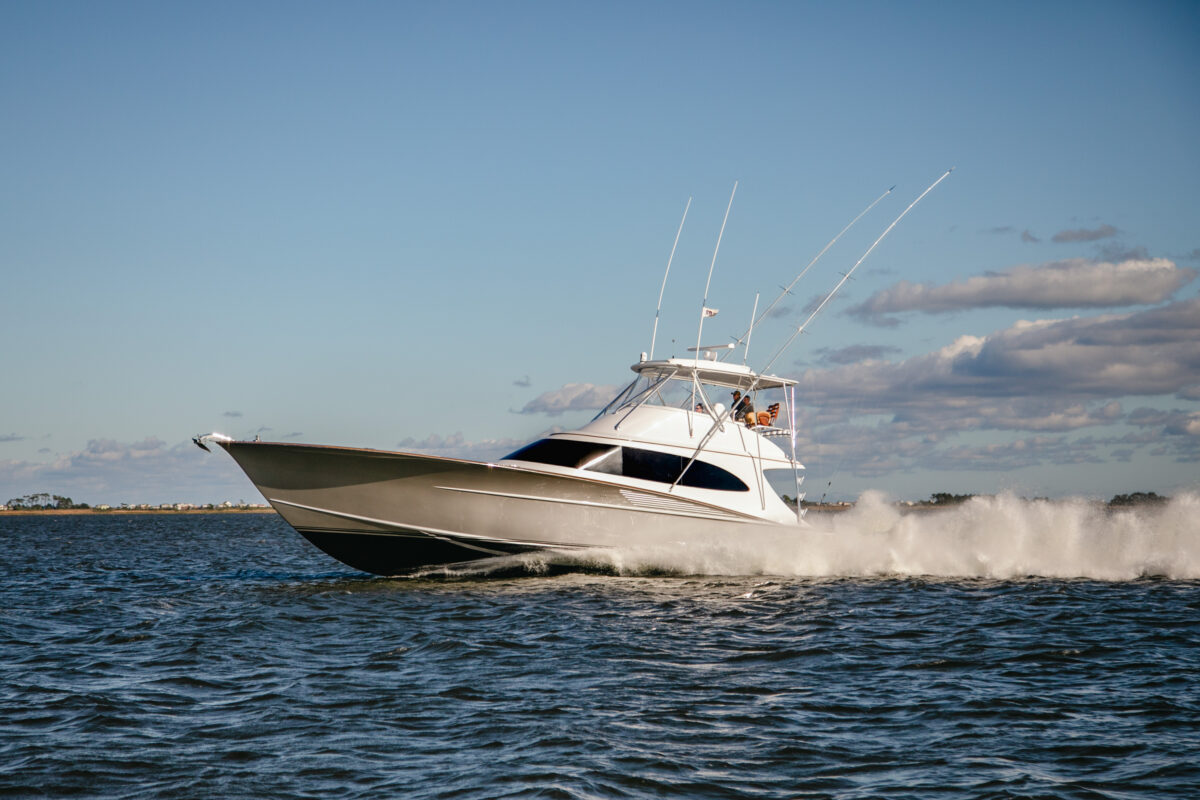Even when they are finished, boats are never finished. From adding new electronics to repowers to interiors, the work of making a boat work for the owner is a process that extends over the boat’s lifespan. While most refits have a specific purpose, there is typically a wish list of other concerns that “would be nice to address, if possible” alongside the major projects. Making the boat quieter is often on this wish list, and for some owners, it may be a priority.
As follows, I have detailed several general approaches to noise control as well as specifics that relate to common refit work and the attendant concerns. This article covers only a small percentage of the places where improved noise reduction can be included as part of a refit.
If a top-line priority is ensuring that the boat comes out of the yard quieter than it went in, then the first step should be to have sea trials conducted by a qualified noise and vibration engineering firm. A qualified engineer can quantify the levels onboard, determine the dominant sources and provide tailored recommendations for reducing these levels. The cost of the consultant can be offset by any potential rework required by a trial-and error approach. The post-yard-period sea trials will confirm that any recommendations have been conducted properly or identify any deficiencies in the treatments.
Performing sea trials to record noise and vibration data before a boat enters the yard is smart. It protects the owner and yard should there be any issues after the boat is launched. Most captains I have worked with have had, or are aware of, incidents where a “new” noise or vibration is identified after launch. Before and after data to confirm two important points, i.e., that the issue is new and what the source is, can help prevent the problem from becoming a point of contention between the yard and owner and present a clear path to resolve it in terms of responsibility or work required.
In many cases, there are no specific noise concerns. Instead, there’s just a general desire to have the boat complete its yard period quieter than when it went in. For most projects, there are opportunities to add improved noise control as a component. The installation of new equipment is one area where a small amount of additional work and expense can pay big dividends. A sizable portion of the noise from any piece of equipment is transmitted through the structure and radiated into the accommodation areas. This is especially true for sportfishing boats where lightweight materials are a critical component of meeting the market’s demand for ever-higher boat speeds. The same properties that make the boat fast also allow energy to transmit through the structure and radiate as noise.
Both the placement of equipment and the method of mounting are critical factors in how much noise a piece of equipment will produce. When deciding where to locate, or relocate a piece of equipment, the stiffness of the supporting structure and location relative to areas of concern are both important. Panels will become less stiff as you move toward the middle of a span. For example, a pump mounted in the middle of a bulkhead will produce higher levels of structureborne noise, regardless of any isolation mounts, than the same pump located at the bottom or edge of the same bulkhead. Removing the pump from the bulkhead and relocating it to a stringer or other heavy structure will be even better. For large equipment that cannot be relocated, such as propulsion engines or generators, increasing the stiffness of the supporting structure will provide for a quieter installation. Adding transverse stiffeners to engine beds around the mounts can increase the performance of existing mounts and ensure the best performance out of upgraded options.
Once suitable locations for materials have been determined or the structure improved as needed, you will need to select the best isolation mount for your equipment. While factory-supplied isolators are often an option or included, they are usually selected for the widest range of applications instead of being specific to the actual installation. Because they are chosen to fit a wide range of installations, they are often stiffer than ideal for reducing structureborne noise. For the best result, work with a qualified mount supplier to choose mounts that will provide higher deflections while maintaining an appropriate level of stability for onboard operation.
One of the most common refits we see in sportfishing boats is updating floor finishes. Whether you update the existing carpet or change to hardwood/ laminate/vinyl flooring, there are significant acoustic gains and losses to be made.
If you are updating a carpet or adding carpet to a space, one of the easiest treatments to reduce onboard noise is to add an acoustic carpet underlayment. While there are many foams, rebonds or other options on the market that tout their acoustic performance, they usually refer to how they perform in a land-based (building) application, where footfall noise from spaces above is bothersome to individuals below. They are, however, not intended to or effective at reducing machinery or hydrodynamic noise traveling up through the sole and into your boat. For onboard applications, you want a composite material that has an acoustic barrier supported on a layer of foam. In this arrangement, the foam decouples the barrier from the sole, which increases the transmission loss (noise blocking capability) of a given weight of acoustic barrier. As with all acoustic barrier composites, the thicker the foam and the heavier the barrier, the better the transmission loss. There is a practical element to how thick of a foam can be used. More than half an inch will result in a very mushy underfoot feel. For the best performance, a two-pound barrier layer on a half-inch foam decoupler layer is your best bet.
There are also steps to take when replacing a carpet with a hard finish. However, there will almost always be an increase in noise. Carpet provides a level of acoustic absorption in the space. However, the space with hard floors will have a louder reverberant noise that affects the audio quality of media or conversation in the space. In comparison, a hard finish will reflect noise and amplify the sound level. If the removed carpet included a foam and mass underlayment, as described above, its replacement by a wood finish bonded directly to the deck only minimally increases the transmission loss of the deck. Hard finishes are acoustically live and will radiate noise into the space.
Despite the additional noise, there are many reasons you might prefer a hard-finished floor on your sportfisher, and there are steps to take to reduce that penalty. The option that is most practical and requires the least amount of additional height is to add a vibration-damping material under the flooring.
Damping materials are typically viscoelastic compounds that absorb energy in structure by converting it to minute amounts of heat because of internal friction. This material is mostly available in either a flexible sheet or a liquid that can be painted or poured into place. To provide satisfactory performance, apply the damping material at a sufficient thickness to be effective in the frequency range typical of onboard noise. For sportfish boats, this should be in the range of three-sixteenths of an inch to one-quarter of an inch and one-and-a-half to two pounds per square foot. While there are different forms of material, branding and marketing, they are all bound by the same laws of physics. Even materials that claim to provide satisfactory performance at extremely low weights and thicknesses will need to be applied in the range above. (Note: The types of damping materials described above are also effective at reducing the ringing noise that radiates off the hull from wave slap. Adding a three-inch wide strip of damping material along the impact area of the chine is suggested.)
It is possible to match or even exceed the transmission loss of a carpeted floor with good underlayment by floating a subfloor above the structural deck. (You will need about one-and-three-quarters of an inch below the bottom of your flooring to execute such a detail.) Floated floors consist of a resilient material such as Sylomer to isolate the subfloor from the deck below, as well as some additional furring to create an appropriate air gap. The subfloor itself can be plywood or composite deck materials. However, an acoustic product that includes a mass layer will provide the best results. The diagram at the top of this page show how a floor is ideally floated above an existing deck. In this detail, the depth of the air gap is critical to performance. Due to the physical properties of the air in the cavity increasing the cavity depth, and with all other factors staying the same, this will provide a greater level of sound reduction. To maintain the same level of performance as the carpeted floor, with good carpet underlayment, a minimum cavitydepth of one inch is needed.

When replacing a carpeted floor with a hardfinished material, it is also important to consider the effects of reflected noise in the space. Adding acoustic absorption material behind the headliner and/or adding more soft finishes on the walls is important to maintain the audio quality of the space.
If you are redoing interior finishes or moving bulkheads, the type of floated panel system mentioned above for decks is also applicable to bulkheads. This is a highly effective solution that reduces mechanical and hydrodynamic noise and increases privacy in the cabins. While floated interior panels are a nice option in any space, I would consider them critical for the accommodations directly adjacent to the machinery space and where owner/guest cabins abut crew quarters.
Bio: Sam Smullin is a 25-year management team member with the Salem, Massachusetts headquartered Sundown Corporation, a world leader in noise control engineering. Smullin’s experience includes boats of all sizes and types and working with builders and refit yards in recreational, commercial and military applications to reduce onboard noise.
This article appeared in our InTheBite Sportfishing Magazine. If you like this you’ll love reading our Independent publication. Click here to subscribe and save 50% and receive InTheBite 8x per year.













